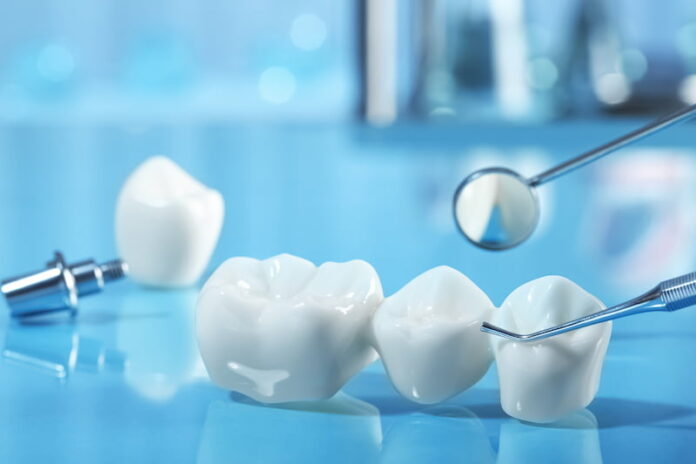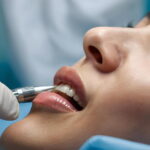Dental crowns serve functional and aesthetic purposes and are vital in restorative dentistry. They’re not just caps for your teeth; they’re meticulously designed from materials like porcelain, ceramic, or metal to restore a tooth’s shape, size, strength, and appearance.
Whether you’re contemplating getting a dental crown or already have one, understanding their lifespan and the factors influencing it is pivotal. Dental clinics, such as Lifestyle Smiles Dentist, emphasize the importance of this knowledge for optimal oral health.
If you’re eager to learn how long dental crowns last and how to maximize their lifespan, keep reading for valuable insights.
Expected Lifespan Of Dental Crowns
When you get a dental crown, it’s natural to wonder how long it will last. This aspect is crucial in understanding this dental treatment’s long-term commitment and value.
Below are key factors that influence the lifespan of dental crowns:
– Material used: The longevity of dental crowns largely depends on the material. Porcelain and ceramic crowns often last 5-15 years, while metal crowns can last up to 20 years or more. The choice of material impacts both durability and aesthetic appeal.
– Quality of dental work: The expertise and technique of the dentist play a vital role. Precisely crafted and properly fitted Crowns are less prone to early failure. A well-made crown fits better and withstands daily wear and tear more effectively.
– Personal oral habits: Habits like grinding teeth, munching on crunchy foods, or neglecting oral hygiene can take a toll on your crown’s longevity. Protective measures, like wearing a night guard for bruxism, can help extend its durability.
– Regular dental check-ups: Routine dental visits allow for early detection and repair of potential issues, possibly extending the crown’s life. Regular professional cleanings and check-ups are crucial in maintaining the crown’s condition.
Understanding these elements will set realistic expectations for your crown’s durability and empower you to maximize its lifespan.
Maximizing Crown Longevity
Ensuring your dental crown lasts as long as possible involves more than just regular dentist visits. It’s about a consistent, proactive approach to oral care and lifestyle choices.
Here’s how you can maximize the longevity of your dental crown:
– Adopt a thorough oral hygiene routine: Part of preventative dental care, it’s imperative to brush twice daily using fluoride toothpaste and floss at least once a day. This routine helps prevent plaque buildup around the crown, reducing the risk of gum disease and decay at the crown margins.
– Use a soft-bristled toothbrush and non-abrasive toothpaste: A soft-bristled toothbrush is gentle on natural teeth and crowns. Non-abrasive toothpaste is recommended to avoid scratching the surface of porcelain crowns, which can make them more susceptible to staining.
– Avoid hard and sticky foods: Chewing on hard foods like ice or candies can cause damage to your crown. Similarly, sticky foods can dislodge or weaken it. Opt for softer foods and chew on the opposite side if possible.
– Wear a mouthguard if necessary: For nocturnal teeth-grinders (bruxers) and sports enthusiasts, a trusty mouthguard protects your crown from the pressure and impact of their passions.
– Quit harmful habits: Smoking and excessive alcohol consumption can negatively affect oral health, potentially compromising the integrity of your crown. Reducing or quitting these habits can be beneficial.
– Regular dental check-ups and cleanings: Besides daily care at home, visiting your dentist regularly for professional cleanings and check-ups is crucial. They can spot and address any issues with your crown before they become significant problems.
These simple practices, woven into your daily routine, can significantly extend the life of your dental crown. Remember, a crown is an investment in your smile and oral health, and taking the proper steps can ensure it remains a valuable part of your dental well-being for years to come.
Signs Of Crown Failure
Detecting early signs of crown failure is essential for maintaining the integrity of your dental work. Knowing these indicators can help you seek timely dental care, potentially saving your crown and avoiding more complex procedures.
Below are the key signs to watch for:
– Pain or sensitivity: If you experience discomfort or sensitivity to hot or cold temperatures, it might indicate an issue with the crown’s fit or the health of the underlying tooth. Pain upon biting down could suggest that the crown is improperly aligned.
– Visible cracks or chips: Inspect your crown regularly for any visible damage. Cracks or chips, even if they seem minor, can weaken the structure of the crown, making it more susceptible to further damage or failure.
– Looseness or movement: A crown that feels loose or shifts when you chew or talk is a clear sign of failure. This can happen due to adhesive breakdown, decay under the crown, or structural damage.
It’s essential to contact your dentist if you notice any of these signs. Early intervention can often resolve issues with minimal additional treatment.
Conclusion
Maintaining a dental crown is ongoing, blending careful daily habits with professional dental oversight. Recognizing the signs of wear or failure early on, choosing the right materials, and adhering to a robust oral care regimen are crucial steps to safeguarding your crown’s longevity. From the crunch of an apple to the gentle floss, every aspect of your dental routine plays a part in your crown’s story. Thus, a combination of personal diligence and expert care is the key to ensuring your crown remains an enduring part of your healthy, confident smile.
Did you find this helpful? Check out our other helpful articles on our website.
Read Also
- Ketamine-Assisted Therapies: Impacts on Employee WellbeingWorkplace stress is common today. Many employees feel tired, anxious, or burned out. Regular therapy can help, but some people need more support. Ketamine-assisted therapy is showing good results for mental health. A ketamine-assisted therapist guides each session safely. This therapy can improve mood, focus, and energy. Learning more about it can help teams stay… Read more: Ketamine-Assisted Therapies: Impacts on Employee Wellbeing
- The Future of Men’s Health: Why Telehealth Is Here to StayTelehealth isn’t just a pandemic trend that faded into the background. For Australian men, it has become one of the most practical, time-saving, and stress-free ways to manage everyday health — and it’s shaping the future of how we access care. Platforms like DOCTO, an Australian online doctor and specialist telehealth service, are leading the… Read more: The Future of Men’s Health: Why Telehealth Is Here to Stay
- How to Build a Simple, Clean Skincare Routine ?You don’t need a complicated skincare routine. It doesn’t have to be something that requires twenty different products and confusing steps. Your routine works well with just a few high-quality clean ingredients. The beauty industry keeps pushing more products, but your skin actually needs less. You only need a simple approach to get better results… Read more: How to Build a Simple, Clean Skincare Routine ?
- How Preventive Dental Care Supports Overall HealthHave you ever wondered how a simple dental checkup could impact your entire body? Oral health is more than just a bright smile. Studies show that poor dental habits can contribute to serious health problems. Gum disease and tooth decay are linked to heart disease, diabetes, and infections. Yet, many people overlook preventive dental care.… Read more: How Preventive Dental Care Supports Overall Health
- Seeing Clearly in a High-Tech World: A Deep Dive into Advanced Vision Care ServicesProtecting your eyesight isn’t optional—it’s essential. Modern eye care has evolved far beyond basic exams, offering advanced diagnostics, personalized treatments, and surgical innovations that keep vision sharp for life. A leading example is Intermountain Eye Center, home to specialists like Dr Fishburn Boise, where patients receive comprehensive, high-level vision care designed to preserve long-term eye… Read more: Seeing Clearly in a High-Tech World: A Deep Dive into Advanced Vision Care Services
- Why the Keto Diet Works for Some People—and Fails Dramatically for Others: An Ayurvedic Breakdown for Modern HealthcareThe keto diet has dominated weight-loss culture for years. For some people, it produces rapid fat loss, stable energy, and improved mental clarity. For others—especially those who gain weight easily—it leads to burnout, digestive distress, rebound weight gain, high cholesterol, and a metabolism that feels slower than before. Healthcare often frames this as a discipline… Read more: Why the Keto Diet Works for Some People—and Fails Dramatically for Others: An Ayurvedic Breakdown for Modern Healthcare
- How to Choose the Best Assisted Living Facility for SeniorsAre you looking for the right assisted living facility for a senior loved one? Choosing a place can feel overwhelming. There are many factors to consider, from care services to the environment. Safety, comfort, and social opportunities play important roles in daily life. Each senior has unique needs and preferences that must be met. Understanding… Read more: How to Choose the Best Assisted Living Facility for Seniors
- Burn Smart, Not Hard; Shape Burn: Clean Protein for Weight ManagementYou want to feel light, strong, and confident. You don’t want crash diets or fake promises. You need a plan that works with your body, not against it. That’s where Shape Burn comes in. You can burn fat without losing strength. You can eat better and stay full. You can manage weight in a way… Read more: Burn Smart, Not Hard; Shape Burn: Clean Protein for Weight Management









